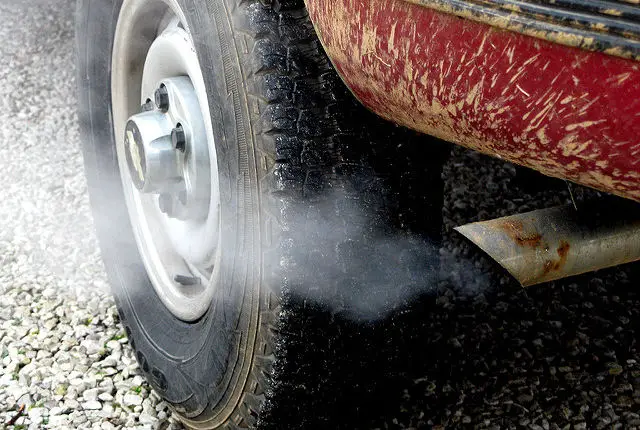Efforts to cut carbon dioxide (CO2) levels on the Isle of Wight have been hampered by increased transport emissions over five years.
The latest data from the Department for Business, Energy and Industrial Strategy has revealed that CO2 emissions from freight and passenger transport rose by 1.2% between 2011 and 2016.
Vehicles response for 22.7% of CO2
That means traffic was responsible for 22.7% of the total amount carbon dioxide released in the area in 2016.
Overall, emissions from transport, both private and for business purposes, increased by 3.5% in the UK over the period.
Climate change concerns
The heatwave that has hit the UK over the summer has raised awareness about the growing risks of climate change.
Scientists believe that future heatwaves will be more frequent and hotter due to carbon dioxide emissions.
Total CO2 emissions fell by 16.7% over the five years on the Isle of Wight. The area was responsible for releasing 0.53 million tonnes of CO2 in 2016 – down from 0.63 million tonnes five years earlier.
WWF: We’re “aping the American market”
Gareth Redmond-King, head of climate change at the World Wildlife Fund UK, put the increase in emissions from transport down to the greater number of large cars on British roads.
He said:
“We’re aping the American market and more drivers are switching to unnecessarily large vehicles with greater carbon emissions. Bigger vehicles tend to be less efficient on fuel use.”
Urgent action needed
Jason Torrance, a transport expert at UK100, a network of local governments committed to promoting clean energy, called on the Government to take urgent action to tackle transport emissions.
He said:
“It is expected that the Government will want to give local authorities more powers to tackle air pollution in the environment legislation next year. But without significant shifts on things like electrification of railway lines, cleaner buses and taxis, plus a shift away from car dependency by designing our cities better, this trend will only get worse.
“There is £78.5 billion of planned government spend on transport infrastructure in England to essentially increase road capacity. That will worsen the problem rather than decarbonising or tackling air pollution.”
Household CO2 emissions
On the Isle of Wight, households accounted for 38.9% of CO2 emissions.
In 2016, industrial and commercial activities produced 38.4% of the carbon dioxide in the area.
The department put the decreased emissions from the domestic sector down to lower coal consumption.
Quick uptake of LED lighting
Phil MacDonald, analyst for the climate change policy think tank Sandbag, said the UK has made some progress on energy efficiency, particularly through the quick uptake of LED lightning.
There is still work to do, he added:
“Compared to the continent, our housing stock is coming from a low base. There’s a lot more to be done in reducing domestic emissions, and much of it, like loft insulation or cavity wall insulation, pays back in reduced energy bills almost immediately.”
Island forests removed 6% of carbon emissions
The department also takes into account the amount of CO2 removed from the air by plants. According to its estimates, forests removed 6% of the carbon emissions caused by human activities on the Isle of Wight in 2016.
Article shared by Data Reporter as part of OnTheWight’s collaboration with Press Association and Urbs Media
Image: armydre2008 under CC BY 2.0





